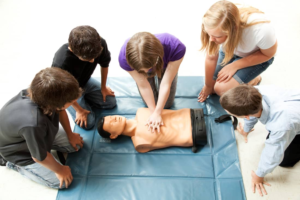
The best option to master chemical bonding and molecular structures for the JEE exams would be the NCERT solutions for Chemistry. Students may get NCERT Solutions for CBSE class Chemistry Fourth chapter in Pdf file format for free to help them prepare for any forthcoming examinations. Chemistry is sometimes referred to as “core science” since it is the foundation of everything visible in the surroundings. Chemistry is a necessary topic in Grade 11; thus, it requires a lot of attention. We give NCERT Solutions for Chapter 4 that include all topic facts as well as possible test questions. Students may get a free copy of the NCERT Solution PDF from our webpage. The concepts in this exercise from NCERT Chemistry Class 11 Solution help students acquire insight into the section so that they could have in-depth understanding of the subject matter as well as excel in their forthcoming tests.
NCERT Solutions for Chemical Bonding and Molecular Structure
This section focuses on the fundamental ideas of molecular structures as well as chemical bonding. The ideas of an ionic bond, valence electrons, and covalent bonds will be described in this section. In addition, going to study about the Lewis structure, bonding parameters, the polar characteristic of covalent bonds, valence bond theory, the geometry of covalent molecules, and the covalent nature of an ionic bond, among other things. You’ll learn about balanced chemical equations, different types of chemical equations, combination reactions, decomposition reactions, displacement reactions, corrosion, and sourness, among other things. Students will also learn about hybridization, s, p, as well as d orbitals, VSEPR concept, the molecular orbital theory of homonuclear diatomic molecules, hydrogen bonds, and basic molecule morphologies, among other things.
What would be a chemical bond and molecular structure, asks the first topic in the Chemistry Class 11 NCERT Answers book? This NCERT Solutions Board exams Chemistry solution deals with a chemical bond as well as its long-term attractive force. In the offered solution for such a Chemistry Class 11 Solution question, it’s functioning as a group on atoms, ions, molecules, and so on in a chemical reaction too is discussed in detail. Its valence shell electron pair repulsion theory, electronics theory, as well as molecular orbital theory have all been used to describe chemical bonds. These bonds are formed by compounds and atoms to achieve stability, which may result in the development of electrostatic force. The activity in this book includes a step-by-step solution as well as answers to help you better comprehend the concepts and process.
Various Lewis dot signs for molecules of elements such as Mg, Na, B, O, Br, and others, as well as how they are written, are discussed in question 2 of the Class 11 Chemistry NCERT Solutions. In response to the aforesaid question, the NCERT CBSE class Chemistry Solution includes basic approaches that are presented clearly for easy comprehension. The equilibrium of valance electrons in atoms is taught in such a situation where students will not struggle to understand it. Students may go through the material with our Chemistry Board exams PDF Solution whenever they wish.
Learners are also asked to put down Lewis symbols for atoms or ions such as S, s2-, and others in the question 3 of this assignment. The exercise problems in this Chemistry Board exams Solution are organised to assist students get more familiar with the Lewis symbols of various compounds. The learners are required to draw Lewis structures for various ions and molecules in this Chemistry Class 11 Solution. This activity teaches students about these structures and how they are formed. Our Chemistry Board exams NCERT Solution, that explains a simpler way for sketching these structures, might help kids understand how to draw these structures rapidly. Ionic bonding, the octet rule, molecular geometry, bond order, resonance, and other topics are covered in the following questions from the exercise. These chemical ideas are meant to improve students’ understanding of the subject. To help you dive further into these topics along your learning journey, consult the Chemistry Class 11 NCERT Solution, which can be accessible online from any location, at any time.
Do you know the answer of the below question?
Q.In which of the following pairs, the two species are not isostructural?
- CO2+3CO32+and NO−3NO3-
- PCI+4PCI4+and SiSI4SiSI4
- C. PF5PF5and BrF5BrF5
D.AIF3−6AIF63- and SF6
Chemical Bonding as well as Molecular Structure is described in Section Four of this course. Our knowledgeable instructors give the most up-to-date study materials to ensure that you fully comprehend the concept of chemical bonding in Board exams without any ambiguity. The NCERT Solution for Chemical Class 11 provides a complete explanation of a wide range of ideas, including atomic structure, chemistry concepts, states of matter, and so on. By keeping a thorough approach to the issue, we offer students with the most recent NCERT Solutions for Class 11 Chemistry. All critical ideas have been condensed by our skilled professors, who have provided shortcut strategies and ways to assist pupils learn these topics more readily. The Chemistry Board exams NCERT Solutions PDF textbook that we provide to help students study for the test also has the unique characteristic of being able to be downloaded at any time as well as viewed at their leisure.





